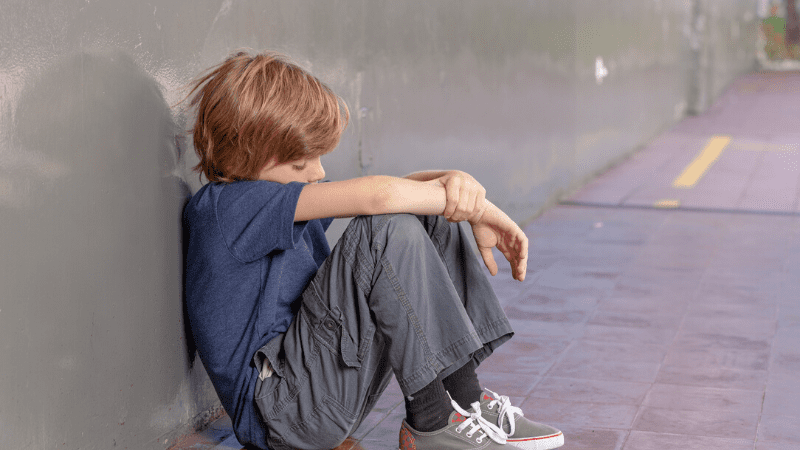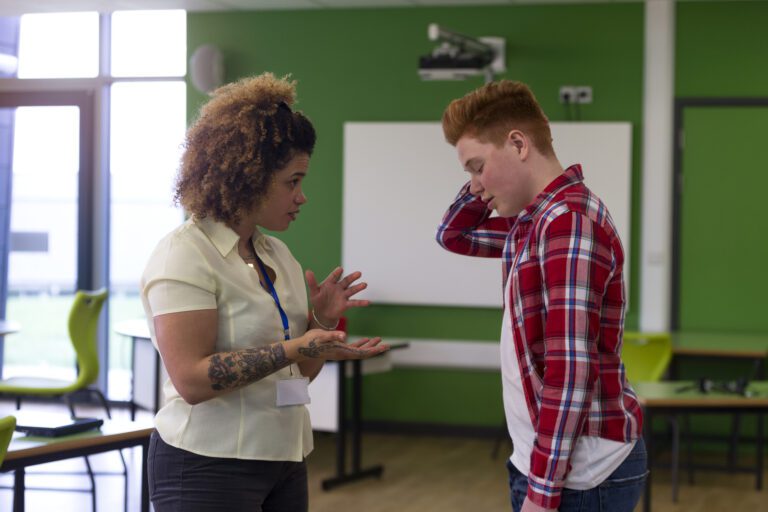Windowless, padded, closet-sized rooms. Kids sent to isolation for refusing to write. Time-out booths monitored by school staff who record cries from inside.
Seclusion rooms seem like something from long ago. Often the rooms have deceptive names, like calm-down rooms, restorative rooms, or quiet rooms. But, schools across the country are still isolating students in response to any number of behaviors. Here’s what one education leader learned about seclusion rooms and some possible alternatives.
One school leader’s experience
Michael Shaffer, a professor at Ball State University in the department of education leadership, has worked with schools that used seclusion rooms. He was also the principal of a school that had a seclusion room. It was a part of a classroom for students with emotional disturbances. There, he quickly learned that teachers were addressing every problem with seclusion. “It’s like the old adage, if the only tool you have is a hammer, everything is a nail,” he remembers.
Shaffer, who has worked in education for more than 25 years, sees seclusion rooms as a practice left over from a time when school leaders didn’t have as many tools to handle more extreme behaviors and when the expectation that all students would learn was not as commonplace. In the past, he says, “seclusion was the process, because [educators and leaders] didn’t know what else to do.”
Now, as teachers learn about PBIS and other tools, and students with disabilities step fully into classrooms, seclusion rooms are. “We’re seeing more principals realizing that there are more options and the first option does not have to be separating students,” says Shaffer.
Current concerns with seclusion
There is no federal law against seclusion. In states that do permit seclusion rooms, regulations are few. Some states have laws that mandate how schools follow up with parents after seclusion is used or how these types of incidents are tracked.
The data on exactly how often seclusion happens is limited, perhaps because of the lack of oversight. Tens of thousands of cases of seclusion are reported to the US Department of Education each year. But these data are likely incomplete. For example, Fairfax County Public Schools in Virginia formally reported that they never secluded or restrained students. Yet local reporting found hundreds of cases of seclusion throughout the district.
Also, in some districts and schools it is still a routine method of discipline. A report by the Chicago Tribune and ProPublica Illinois found that, in some Illinois districts and schools, seclusion is more routine than last resort. ProPublica found that students were often put into seclusion for offenses that posed no safety risk, including not participating in class and being disrespectful. (Of note, since the ProPublica report came out, the Illinois Board of Education has taken action to end the practice.)
Here’s what Shaffer recommends instead of seclusion rooms:
- Rethink behavior: “We have to stop criminalizing behavior,” says Shaffer. “These kids are not killers, they just don’t know how to control their emotions and the physicality of their emotions.” Rather than reacting to the behavior, try reframing the behavior as the child’s method of communicating what they cannot do or how they feel. Then, teach children how to manage their emotions or how to self-regulate.
- Create tool kits for teachers: We often punish students with disabilities disproportionately. To address this, Shaffer made sure the teachers who worked with students with emotional disabilities received the most and best training on managing and de-escalating behavior.
- Put school-wide procedures in place: Protocols like Crisis Prevention Institute or Positive Behavior Interventions and Support reduce the use of seclusion rooms in the schools that Shaffer worked with. These whole-school procedures put preventative tools in place and train teachers how to better handle escalating behaviors.
- Look for seclusion use trends. Shaffer worked with teachers to identify when students were being placed in seclusion. They noticed that there were certain times of day (often during writing instruction) when disruptive behavior increased. This helped him focus on strengthening writing instruction and putting prevention in place.
- Sensory rooms: Shaffer also worked to fund a sensory room that helped students calm down when they were upset or stay in a positive frame of mind during the day.
Do you work in a school with seclusion rooms? Have you taken steps to reduce or reframe how teachers approach behavior de-escalation in your school? Share on our Principal Life Facebook Group.
Also, check out 7 Classroom Management Techniques That Really Work


